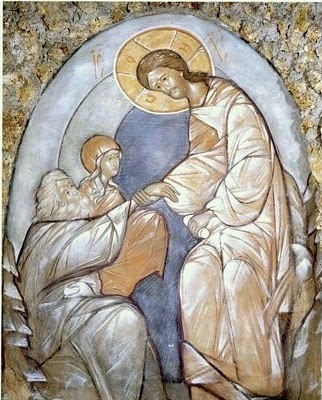A Contribution to the New Evangelization and the transformation of the culture
Here is early fruit of Carrie Gress’s course on the philosophy of the good, the true and beautiful, which is one of the core classes on Pontifex University’s Masters in Sacred Arts program.
As a result of reflection on the medieval theology of light of figures such as St. Hildegard of Bingen, Bishop Robert Grosseteste, St. Bonaventure, St. Thomas Aquinas (much of which happened as she was pulling together the material for the class), she has written her beautiful prayer, the Litany of Light. What is more, it has just received an imprimatur from the Most Reverend Liam Cary, Bishop of Baker, Oregon

So what has this got to do with the New Evangelization and the transformation of the culture?
Well, the Litany is an example of ‘para-liturgical prayer’. It is a prayer that can be said in common, and which through the themes and a structured approach leads us to a deeper participation in the highest prayer – the worship of God in the sacred liturgy. Other examples of such prayers that you might know about are the rosary and the Divine Mercy chaplet.
In his statement on the New Evangelization, Pope Benedict XVI talked about the need for a balanced prayer life which harmonizes prayer in the liturgy, para-liturgical prayer and personal prayers. It is through prayer, he says, united to the person of Christ as part his mystical body the Church, that we are supernaturally transformed. (I wrote about this also in an article called The Domestic Church and the New Evangelization.) By grace, we have joyful Christian lives that shine with the light of Christ. It is the example of the Christian life that we give to others, despite ourselves so to speak, that draws other to the Church because they see it and want what we have. And to the degree that we let Him work through us, our actions are graceful – literally – and speak of Christ beautifully. We become the New Evangelists whose work and activity will create a culture of beauty.
This image of light, as exemplified by Christ in the Transfiguration, has always been associated with the highest goal of the Christian life – partaking of the divine nature in union with Him – by which all happiness is given to us. Therefore, I suggest, a meditation upon the Light which is structured in such a way that it enhances our chances of participating in it is a valuable contribution to a radical transformation of the world twice over!

Here is the Litany as described by Carrie herself and featured in the National Catholic Register. All sacred Christian art should in some way reveal this Light, whether it is the halo of the saint, the uncreated light of the risen Christ or the light of baroque art contrasted with the darkness. The Gothic cathedral arose out of a desire to communicate divine light through the architecture.
As I read through her words, it strikes me that this is a prayer in the spirit of the great baroque art of the 17th century especially. One by one she lists so many of the great evils of the world and which abound today and as a remedy calls for the Holy Trinity to ‘bring your light’. This contrast of shadow and light is deliberated accentuated in baroque art so as to tell us visually that while there is evil and suffering in the world, there is also Christian hope that transcends it and which is in the Light which ‘overcame the darkness’.

Art, main feature, Titian: the Transfiguration; San Chapelle, Paris; Gregory Kroug: the Harrowing of Hades; Rubens: the Deposition.
